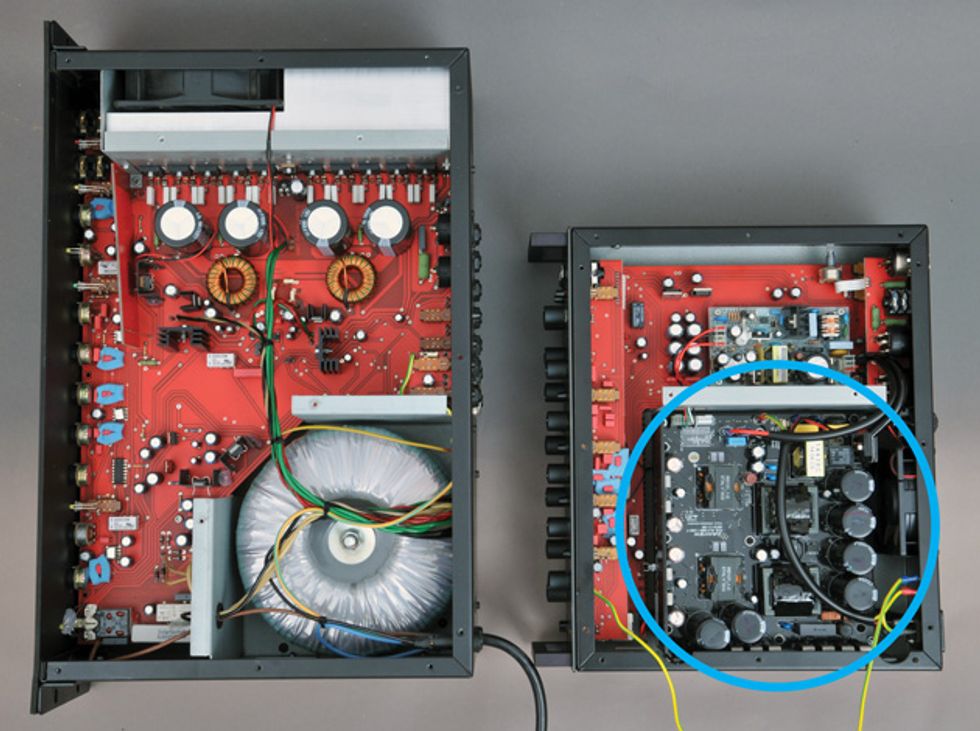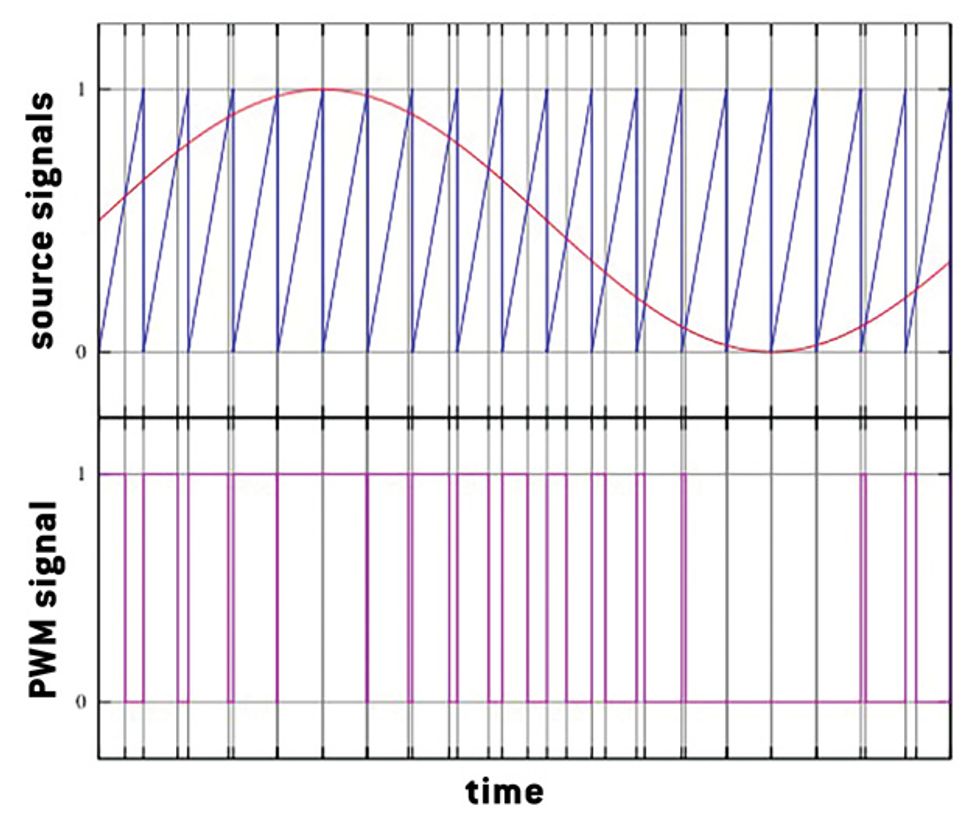Understanding what happens in a classic class-A tube or solid-state amp is relatively easy: They simply beef up the original signal while keeping the original waveform during the process. And even though class-B and class-AB amps can slightly alter a small part of the original waveform, there isn't any fundamental transformation or processing in the signal path.
Since class-C amps are not for the audible frequency range, let's skip over them and discuss class-D amplification. As mentioned in last month's column [“Sonic Purity and Amp Topology," August 2019], amp classes are arranged alphabetically in the order they were first introduced. That said, class-D technology couldn't have appeared at a worse time insofar as nomenclature. Had the technology arrived later and received the “class-E" classification, the “D" would not likely have been assumed to be short for “digital." Yes, class-D amps do use more complex electronic elements and circuitry, and there are variations that use digital elements, but the principles of signal processing behind class-D amps are not digital.
Class-D amps have seen a huge rise in market share—especially in the last decade—due to their undeniable advantages of being small and light, relatively cheap, and energy efficient. Photo 1 shows a top-view comparison of a class-AB amp alongside a class-D amp from Glockenklang. (The class-D power-amp module is circled in blue.)
All that said, class-D amps often have a less-than-stellar reputation among audio purists and manufacturers of class-A amps, mainly due to the poor quality of the early class-D modules, or simply because they are missing the mathematical understanding and abstraction level of class-D signal processing.
A class-D amp consists of a few key elements:
· a triangular or sawtooth wave generator
· a comparator
· a switching controller and output stage
· a low-pass filter
The main signal conversion in a class-D amp is called “pulse width modulation" (PWM). A sawtooth signal of a high frequency (100 kHz–1 MHz) is modulated by our audio signal. The comparator checks their voltages and turns the output to either “on" or “off," depending on which of the voltages is higher. Fig. 1 shows our two input wave forms of the audio signal (red) and sawtooth generator (blue), along with the comparator's output below (magenta). The resulting PWM signal is a pulse wave of different widths in the frequency of the sawtooth wave. All audio information about amplitude and frequency of our initial audio signal is now in the width of these pulses.
The amplitude and frequency of the pulse-width modulation signal are constant, and all our audio information is in the pulse width. Diagram courtesy of wikimedia.com
Because the PWM signal is used to trigger the amplifying transistors to either on or off, they are also called “switching amps." Even though this switching between two states may remind us of something digital, the PWM signal is far from that. The switching, however, is the main reason for power efficiency in the range of 90 to 95 percent: a transistor is either running at full power or off. All that needs to be done before sending the signal to a speaker is to finally remove the carrier frequency in the low-pass filter.
Sounds simple, right? But again, the main problem is the transition between transistors. Manufacturers have to make sure only one of them is on at a given time. If two were on at the same time, the resulting short circuit would destroy them. So, for security reasons, we need a short idle time before another one takes over. Keep in mind that the longer the idle time, the higher the total harmonic distortion (THD) will be. The shorter the idle time, the better the audio quality. These idle times are in the range of just a few nanoseconds, and modern, optimized amp modules can, of course, provide convincing audio qualities.
Although it's generally possible to build a complete class-D amp from scratch, the power-amp modules are most often sold as a complete component. And due to the limited number of power-amp module manufacturers, many amp makers actually use the same ones, which further raises the importance of an amplifier's preamp and tone section to set itself apart.









![Rig Rundown: AFI [2025]](https://www.premierguitar.com/media-library/youtube.jpg?id=62064741&width=1245&height=700&quality=70&coordinates=0%2C0%2C0%2C0)












 Shop Scott's Rig
Shop Scott's Rig

![Rig Rundown: Russian Circles’ Mike Sullivan [2025]](https://www.premierguitar.com/media-library/youtube.jpg?id=62303631&width=1245&height=700&quality=70&coordinates=0%2C0%2C0%2C0)













































